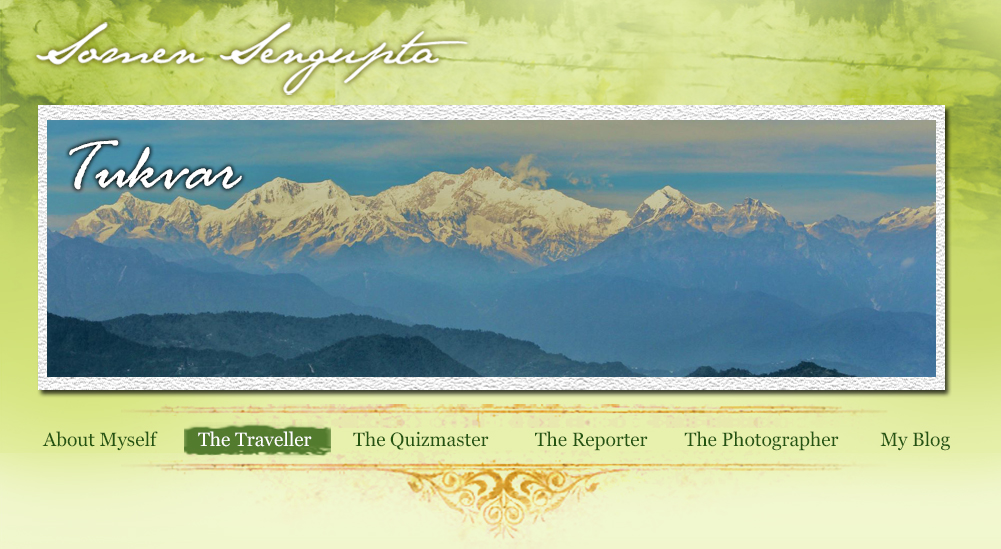| TUKVAR: A TEA STORY WITH THE QUEEN |
|
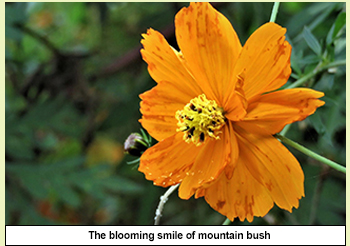 At the end of an almost unsurmountable
road, finally our car reached at an edge of
a stiff slope. From here one needs to walk
down towards a small wooden cottage
standing at a threshold of a tea garden.
At the end of that earthy road is a small milestone
that reads “ Bliss -0”.
I genuinely have no reason to differ with that.
The insipid lockdown, online meetings, washing
hands, masking faces and above all fear of death were
still ruling over me when I was boarding my flight to
Bagdogra but once I disembarked from flight to travel
in hills of Bengal, the old wonderlust in me was alive!
At the end of an almost unsurmountable
road, finally our car reached at an edge of
a stiff slope. From here one needs to walk
down towards a small wooden cottage
standing at a threshold of a tea garden.
At the end of that earthy road is a small milestone
that reads “ Bliss -0”.
I genuinely have no reason to differ with that.
The insipid lockdown, online meetings, washing
hands, masking faces and above all fear of death were
still ruling over me when I was boarding my flight to
Bagdogra but once I disembarked from flight to travel
in hills of Bengal, the old wonderlust in me was alive!
I thanked God that I was back in the mountains.
We found no support from our family and friends to
makeatrip to the hills. However, the call of
Kanchenjungha had given measilent permission. We
are almost in Darjeeling, yet not there.
This time on my trip to Kanchenjungha, I added a
heritage tea estate to my travel itinerary. We reached
Tukvar, where in 1852 the first commercial tea
plantation started was in Darjeeling. Rest, as they they
say, is history.
Across Assam, Bengal and Sikkim tea tourism is the
new trend. It does not offer luxury but rich experience
of British heritage. Tukvar the oldest tea estate now
known as Puttabong is new hill destination of Bengal.
In 1508 when an unique leaf named tea arrived in
Europe from China through Portuguese and soon
became a popular drink across countries, no one
perhaps imagined that within 300 years or so this
will become a signature commercial crop of
British heritage.
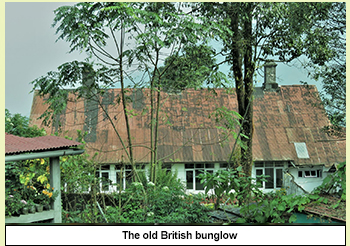 We were at 6500 ft from sea level and nearly 22 km
from Rangeet River that makes boundary between
Sikkim and Bengal. As Sikkim is very close from here,
its climate often influences Tukvar’s.The day we
arrived it was cloudy because there was snowfall in
Sikkim the night before. We were at 6500 ft from sea level and nearly 22 km
from Rangeet River that makes boundary between
Sikkim and Bengal. As Sikkim is very close from here,
its climate often influences Tukvar’s.The day we
arrived it was cloudy because there was snowfall in
Sikkim the night before.
Cloudy weather meant that the chances of witnessing Kanchenjungha is slim. I prepared myself to be
satisfied with only heritage marvel this time.
The heritage bunglow of Tukvar is not open for
tourist yet but within the tea estate a private wooden
cottage has started offering accommodation - That is
till now the only place to stay here ensuring limited
crowd and an endless solitude with chilling fresh
mountain air. With that the panorama of world’s most
beautiful snow range. it truly makes for a deadly combo. We were hardly 20 kms from Darjeeling town,
yet it seemed that were in a deep, isolated faraway
place. No sound and no light on the horizon as far as
one could see. On the upside, the cottage was
tastefully lit up.
Soon, after our arrival, pure golden Darjeeling tea
was served with vegetarian snacks. In that chilling
cold and darkness outside, sipping a steaming cup of
tea was nothing less than being offered a taste of
ambrosia. In the serene surroundings, we were tempted to crack a ghost story or better yet listen to the soft
melodies of Kishore Kumar. As both were not beyond
reach at that moment, we took refuge in the glorious history of Darjeeling and Tukvar.
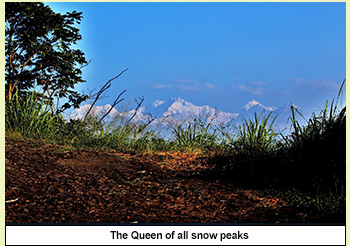 Though tea in Darjeeling was first
planted in 1841 by Arthur Campbell a
Scot the commercial production started in 1852 by Captain Masson
in Tukvar. Almost at the same time
commercial production started in two
more places named Steinthal (meaning ‘Stone Valley’ in German ) and
Aloobari. Though tea in Darjeeling was first
planted in 1841 by Arthur Campbell a
Scot the commercial production started in 1852 by Captain Masson
in Tukvar. Almost at the same time
commercial production started in two
more places named Steinthal (meaning ‘Stone Valley’ in German ) and
Aloobari.
Tukvar also has a German connection, my son chimed in with joy.
1830s, much before of tea story
began, a group of Protestant missionaries from Moravian Church of
Germany were sent here to convert
local people into Christianity. It was known as Tukvar Mission planned by
one Reverend William Start. The mission failed. The group disbanded but
one member named Andrew Wernickelater worked in Tukvar tea estate. He also
worked in two more iconic tea
estates of Darjeeling named Makaibari
and Glenburn.
Time moved fast with more exciting stories like how a deeply ridged forest
frequented by tiger,
leopard and bear was
gradually developed
into one of the best hill
retreat of India by
British after they failed
badly in Cherapunji of
Assam. We recalled the
lives George Lloyd and
JW Grant, first two officers of East India
Company who were
sent here in 1829.
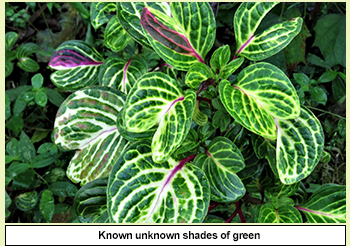 It was only the sound of silence prevailing
outside when we had our simple yet
mouth-watering dinner.Awarm surrender
under the double layer blanket soon took us
to a blissful sleep. It was only the sound of silence prevailing
outside when we had our simple yet
mouth-watering dinner.Awarm surrender
under the double layer blanket soon took us
to a blissful sleep.
In morning Queen was smiling on us -
Over the green carpet of tea garden, the skies
cleared and Mt Kanchenjungha was visible
in her full glory.
The cloudless November sky set the
moment perfect exposing the long range of
snow peaks almost covering all major peaks
of Kanchenjungha. Starting from
Kumbhakarna on extreme left range moved
like a cavalcade touching Kabru -1 and
Kabru -2 and ending at Mt Pandim. In the
middle there was amazing amalgamation
of five peaks of Kanchenjungha. Out of
that 4 are higher than 8000 mts an
unbelievable array of snow peaks
nowhere else can be seen.
Soon clouds started moving upwards and a
bright ray of light soon kissed the valley. In
that light of dawn, we noticed that exotically
colorful Himalayan flora around us.
An asphyxiation kind of monotony
created during long lockdown was
slowly easing out. We all were back to life
after many months.
Travel Logistics :
# Tukvar is just 20 km before of Darjeeling.
# It takes nearly 3 hours from Bagdogra airport.
# Do not go without advance booking.
# The estate is full of Himalayan birds and flora.
# The road is good but very stiff.
# The Tea estate is presently owned by Birlas - It's new name is Puttabong.
# The British bunglow is now used by company manager - You need to derive permission to access that.
# The accommodation is decent and hygenic - Do not expect luxury.
This article was published in The Hitavada on 4th April 2021.
Photo credit - Somen Sengupta and Deoparna Rai.
Click here to view the original article
|
